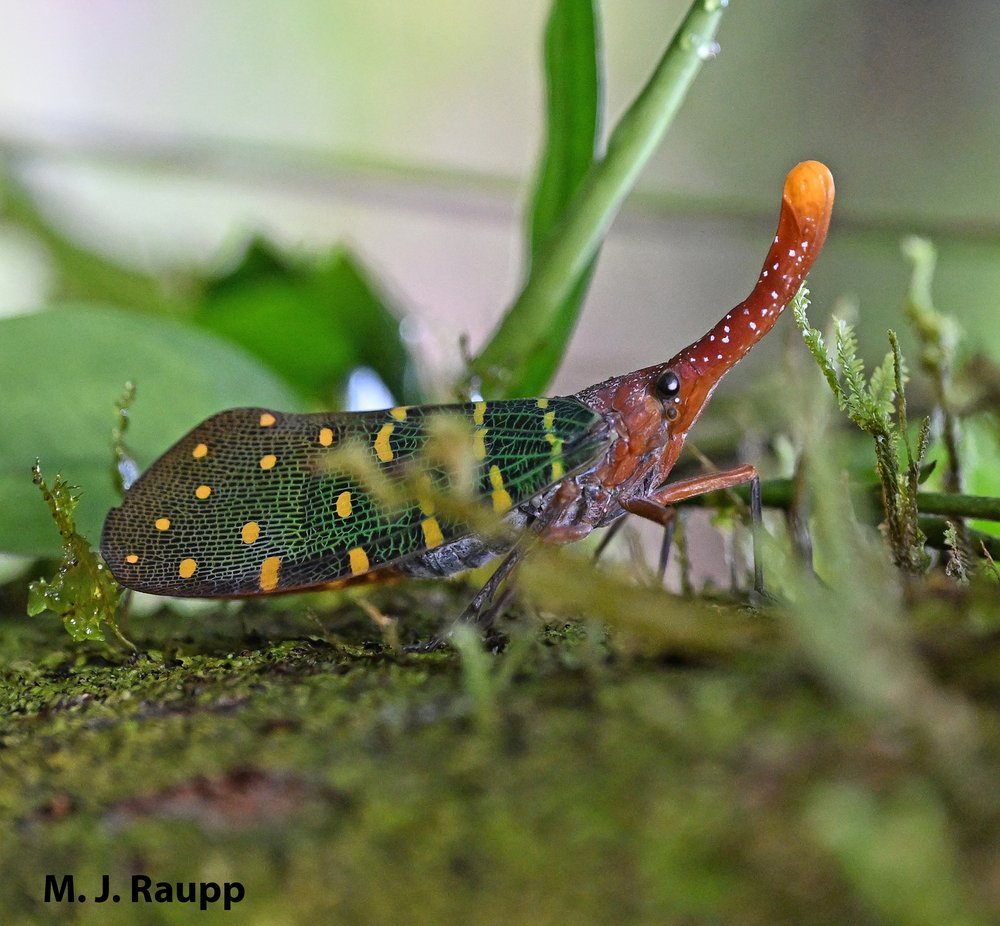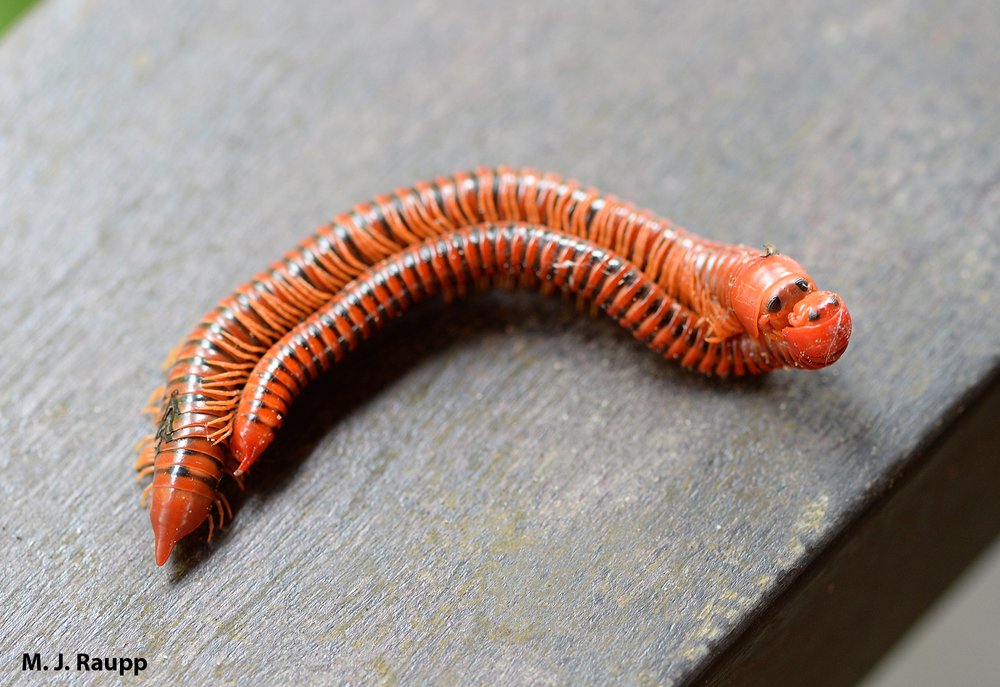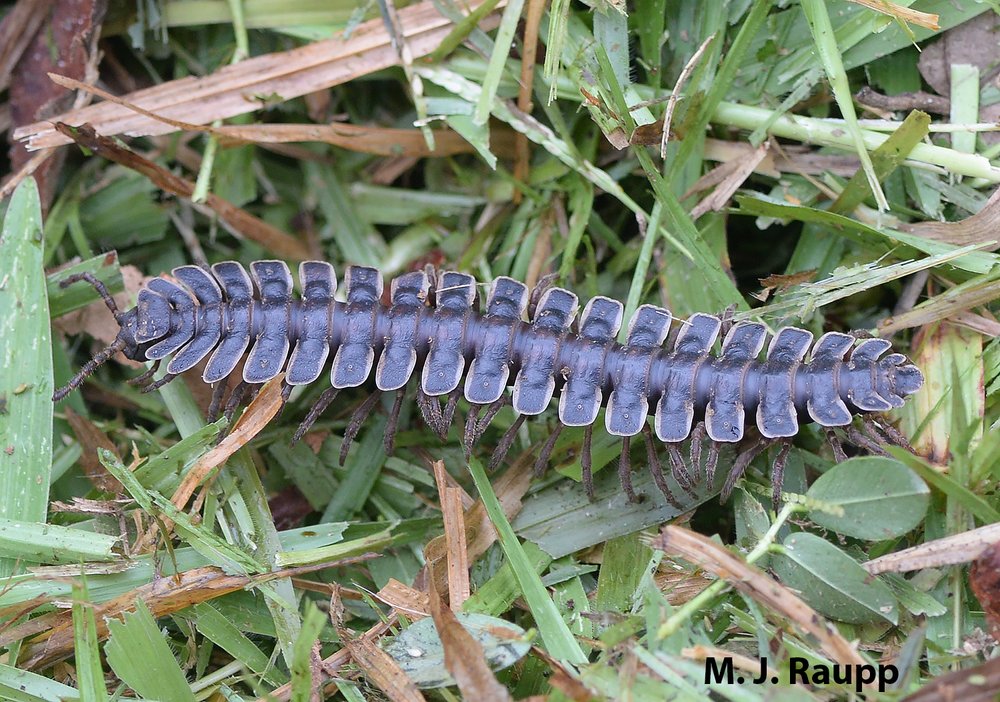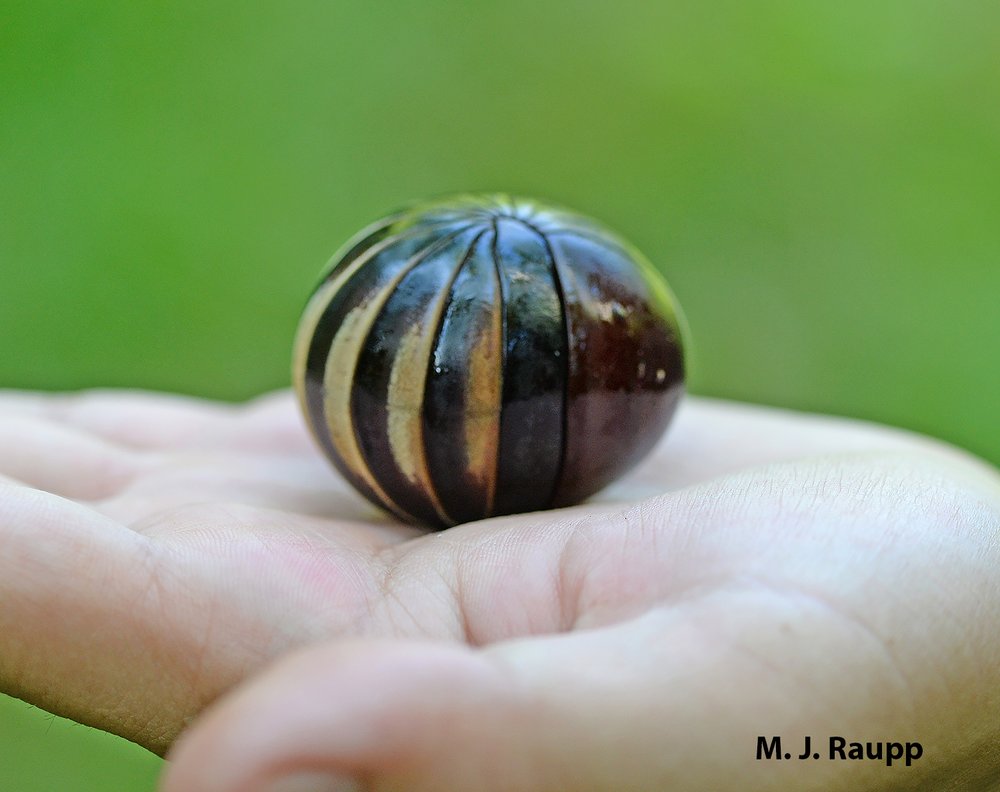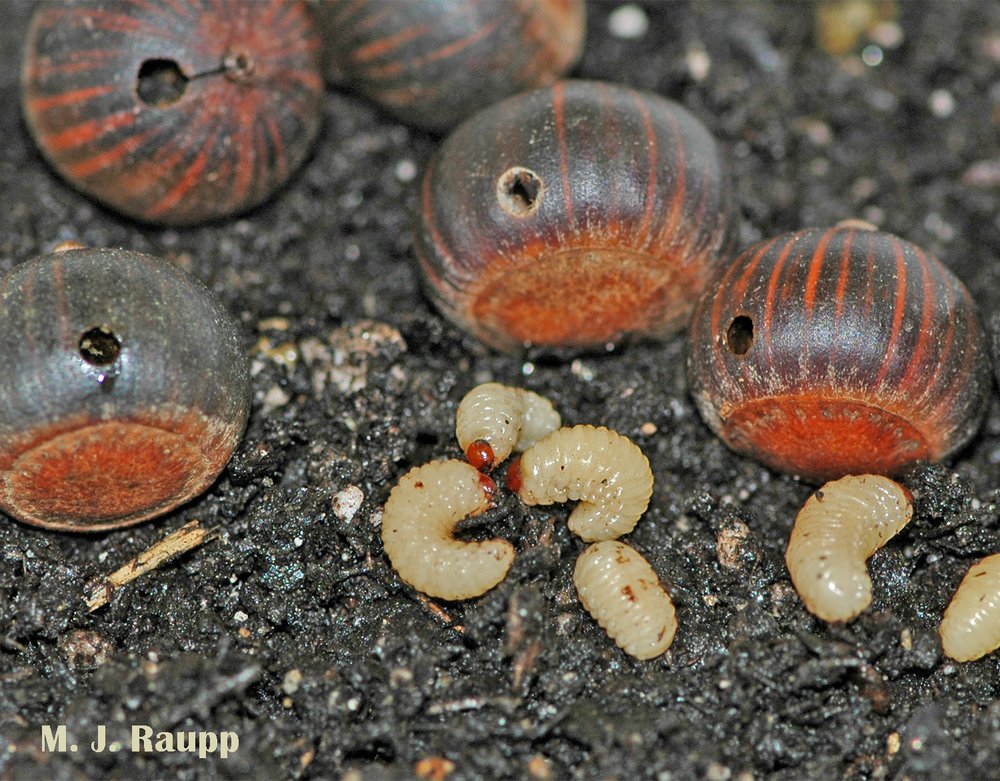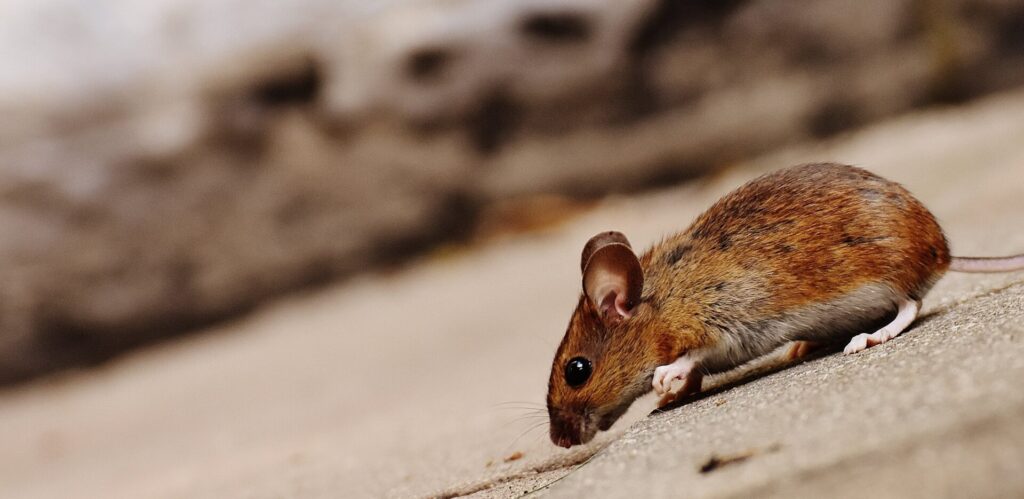Encounters with Bornean kelulut: stingless bees, Meliponini
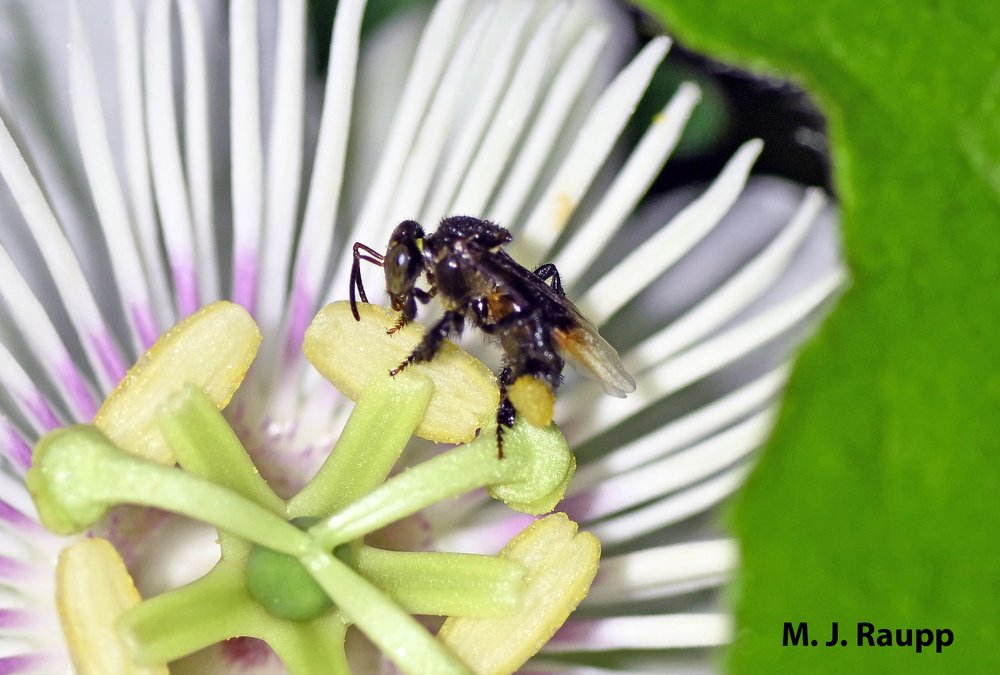
Pollen baskets loaded? Check. One last sip of nectar? Check. Passion flower pollinated? Check. Time to return to the hive to feed the sisters. The passion flower says thanks.
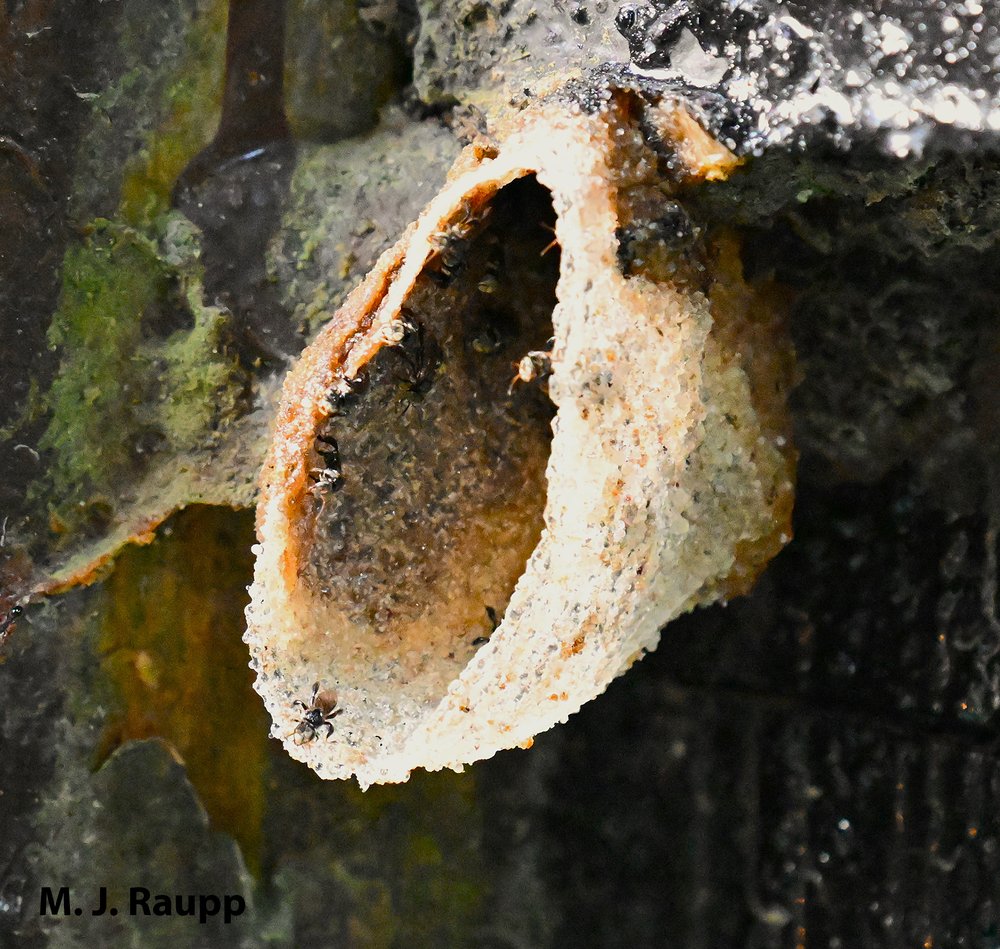
Cracks in masonry walls often provide a suitable nest site for stingless bees. The horn-shaped entrance made of propolis (wax and other substances) narrows the entry way to the hive, making entry from intruders more difficult.
In recent weeks we visited the magnificent millipedes and elegant sap-sucking lanternflies in the Bornean rainforests. This week let’s meet stingless bees, pollinators helping to sustain biodiversity in the plant world. Here in the US our notion of bees is usually western honeybee-centric, visions of rectangular white boxes packed with racks of honeycomb, busy workers gathering pollen and nectar, and a queen producing legions of brood all guarded by fearless female warriors capable of a delivering a fierce sting. Although they are closely related to western honeybees, tropical stingless bees, which in Borneo and other parts of Malaysia are known as kelulut, are quite a bit different. In the natural world, they typically nest in tree hollows and earthen crevices, but with invasion of their realm by modern man cracks and crevices in wooden, cinder block, and masonry walls have become popular nesting sites. Often these hollows have rather large openings and to limit access to the colony and facilitate defense, voids are narrowed to trumpet-shaped entrances constructed with a sticky substance called propolis, a mixture of wax and other materials. This defensible portico may be help stingless bees repel ants and other creatures that would love to raid the colony and plunder honey, pollen, and baby bees inside.
Honey produced by western honeybees, Apis mellifera, is an important commercial enterprise in many parts of the world. Honey produced by solitary bees has been described as sour or bitter sweet. It is valued as much for its medicinal properties that sources claim include anti-bacterial, anti-carcinogen and anti-oxidant properties, as it is for its flavor. The domestication of stingless bees is known as meliponiculture. The value of locally produced kelulut honey is so great that in 2019 the Malaysian government launched a National Kelulut Honey Industry Plan to assist beekeepers to supply stingless bee honey to a world market, hopefully at a hefty profit.
An excited tourist reported swarms of unidentified insects outside his cabin at Tabin Wildlife Reserve. At first glance, these appeared to be tiny flies, but on closer inspection the frenetic horde proved to be a species of small stingless bees that built their colony in the wall void of the cabin. In a more natural setting on an ancient tree in the Sun Bear Conservation Centre in Sepilok, Malaysia, a trumpet shaped cone of propolis marked the entryway to a colony of mellow stingless bees. Nearby, stingless bees provided the vital service of pollination to a passiflora blossom while gathering nectar and pollen for their colony.
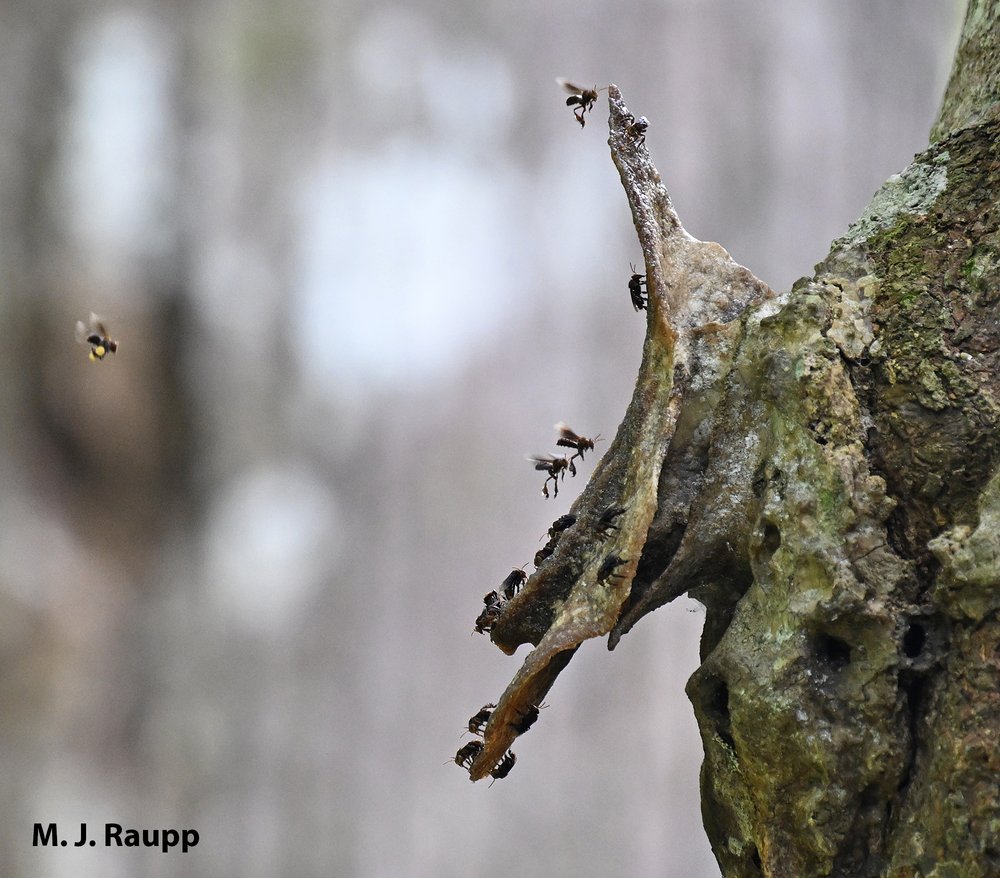
Almost home, a stingless bee with pollen baskets fully loaded, is on final approach to an ancient tree where her nestmates guard the horn-shaped entryway the hive.
Although stingless bees lack the ability to sting, they are by no means defenseless. In past encounters with solitary bees in the tropical rainforests of Belize, they proved otherwise. In a previous episode we reported on a large dark Belizean bee that employed a highly effective defense. The nest entrance of this species was guarded by several workers carefully watching the movements of people nearby. When one person ventured a little too close to the colony, bees mounted a surprising attack. The assault consisted of dozens of workers flying into faces and hair of nearby humans. Bees paid special attention to eyes, noses, and ears where, despite the absence of stings, their annoying bites were unpleasant and persistent, forcing the intruders to vacate the premises near the hive.
Recently, scientists have discovered that stingless bee soldiers are a unique caste, some 30% heavier than their nest-mates. Their job is to guard the colony against marauding enemies, including species of robber bees that commonly raid stingless bee colonies. Their coup de main involves grabbing an invader by antenna or wing and refusing to let go, thereby thwarting an attack. In his book, The Insect Societies, E.O. Wilson describes accounts of stingless bees attacking human intruders. Some species eject an irritating liquid that causes a burning sensation to skin. This trick has earned them the local name of cagafogos or “fire defecators” in Brazil. So potent is this defense that it may dissuade very aggressive attackers like army ants from entering nests. In Bornean rainforests and nearby open areas stingless bees were common visitors to many kinds of flowering plants, gathering nectar and pollen. Although past encounters with stingless bees in Central America were spicy, we were able to observe and enjoy mellow Bornean stingless bees without drama. Lucky us.
Acknowledgements
References used in this episode include the following: “A morphologically specialized soldier caste improves colony defense in a neotropical eusocial bee” by Christoph Grütera, Cristiano Menezesb, Vera L. Imperatriz-Fonsecab, and Francis L. W. Ratnieksa, and the fascinating “The Insect Societies” by E.O. Wilson. Once again, we thank our rainforest guides, Leo on the Kinabatangan River, Larry at Mulu National Park, and Oliver at Tabin Wildlife Reserve for helping us find insects, and adventurers Dan, Kristie, Bob, Pat, and Paula for spotting insects and providing ideas about creatures featured in these episodes.
To learn more about stingless bee farming in Borneo, please visit this website: https://www.mysabah.com/wordpress/stingless-bee-kelulut-farming-sabah/
This post appeared first on Bug of the Week
